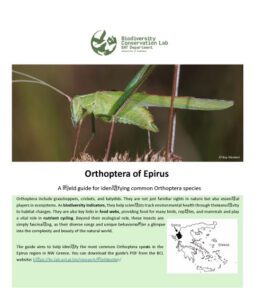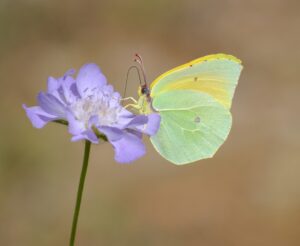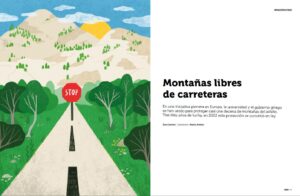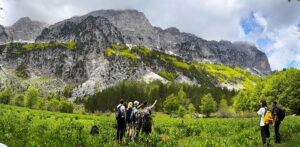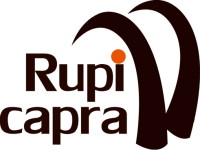
IV International
Rupicapra Symposium
IV International Rupicapra Symposium
In the Shadow of Greece’s Wildest Peaks
Konitsa, Greece,
25-27 September 2025
The University of Ioannina, the Balkan Chamois Society and Pindos Perivallontiki are pleased to invite you to the IV International Rupicapra Symposium, to be held on 25-27 September 2025 in Konitsa, Greece, near the largest Balkan chamois population of the country. The venue is the Event Hall of the Municipality of Konitsa
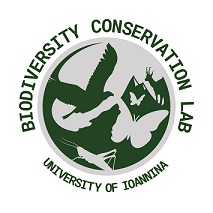
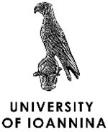
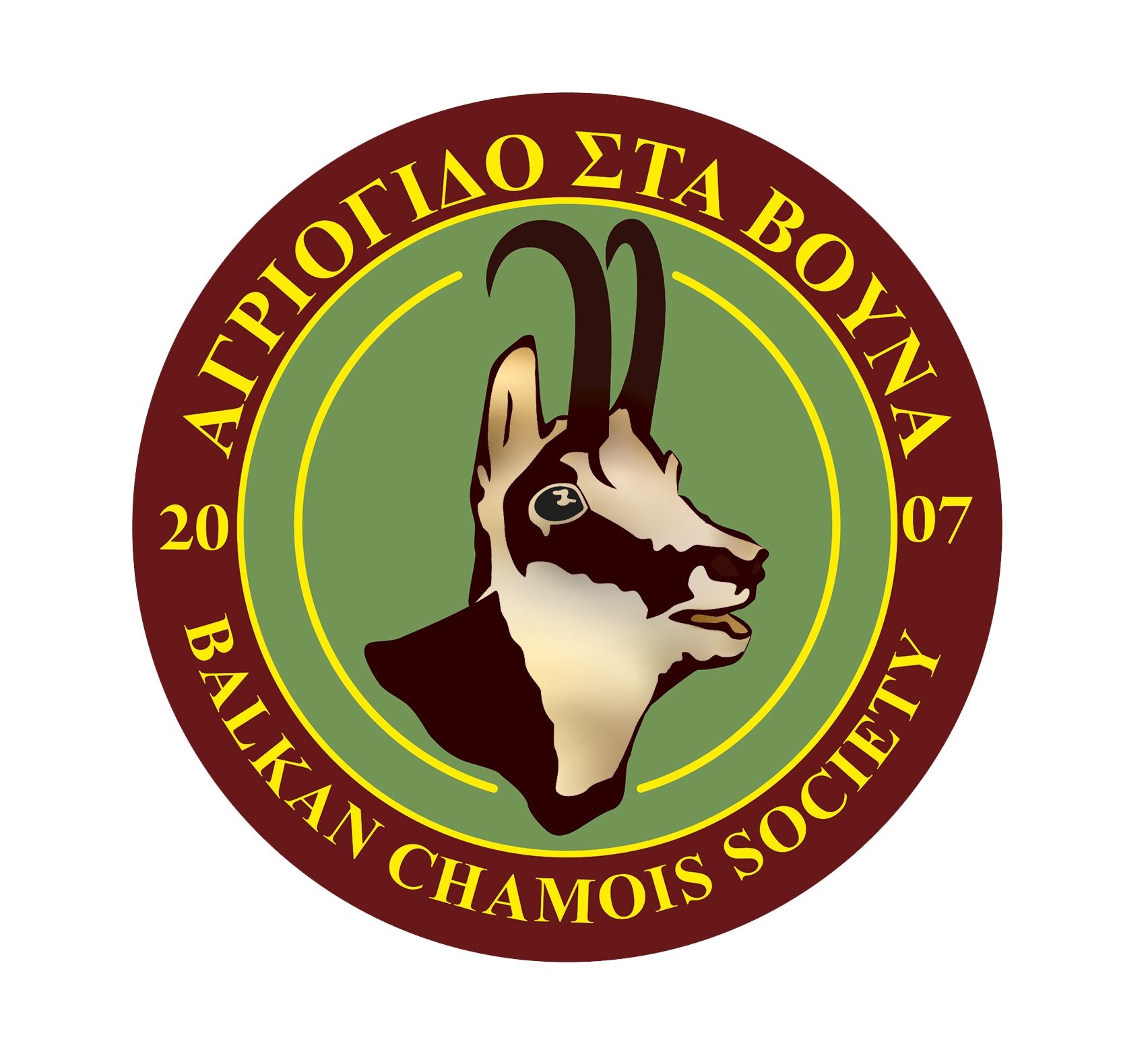

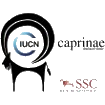

Overview
The Symposium will serve as a forum for sharing international scientific knowledge and experience related to chamois (genus Rupicapra). The event aims to promote the dissemination of the most current research findings, support evidence-based conservation strategies, and encourage the sustainable management of chamois populations across their native ranges.
We extend a cordial invitation to students, early-career researchers, chamois experts, wildlife managers, field practitioners and policymakers to participate.
List of topics
- Genetics and Systematics
- Physiology & Disease
- Behavior and Ecology
- Management and Conservation
- Other
We look forward to welcoming you to Konitsa!
Venue
Venue map
The venue is Konitsa Town Hall [2], just a 3-minute walk from Konitsa central square [1]. Students can apply for free accommodation in the Student hostel of Konitsa Municipality [3], where lunch will also be offered for attendees.
[1] Central square of Konitsa: Coordinates: 40.0491, 20.7508
[1] Bus station: Coordinates: 40.0495, 20.7502
[2] Venue: Konitsa Town Hall: Coordinates: 40.0479, 20.7516
[3] Accommodation: Student hostel . Coordinates: 40,049103; 20,743653
Konitsa town
Konitsa is located in NW Greece, in Epirus region, in the shadow of the mountain Trapezitsa (2022m), offering a splendid view of Aoos river, one of the last free-flowing rivers in Europe.
Inhabited since 2000 BC, it has a long history and served as an economic and cultural center during the Ottoman period, bearing today the signs of ancient civilizations and their old glory. At the entrance to Aoos Gorge stands the famous Konitsa stone bridge, measuring 30 m in length and 20 m in height, and perhaps the largest stone bridge in the Balkans. It was built in 1871 by 50 local workers with donations from the residents and is the symbol of the city.
Located at the border of Pindos National Park, Konitsa is nowadays a pole of attraction for hikers, serving as a starting point for mountaineering expeditions in the Greek wilderness: Grammos (2500 m), Smolikas (2640 m), Tymphi (2497m) and Nemertsika mountains. It receives many visitors, who enjoy the unique landscape, local products, and the architecture of the city’s old neighborhoods and its 42 villages. There is a long tradition in adventure tourism, and particularly so for kayaking and rafting on the Aoos River. All facilities are available in Konitsa, including a bus station, a medical center, shops and restaurants.
Symposium organization
The IV Rupicapra Symposium is organized by the University of Ioannina (BCL – Biodiversity Conservation Laboratory of the Department of Biological Applications and Technology), the Balkan Chamois Society, and Pindos Perivallontiki.
Organizing Committee
Chair: Haritakis Papaioannou (Balkan Chamois Society & University of Ioannina, Greece)
Co-chair: Luca Corlatti (Stelvio National Park, Italy)
Members:
Vassiliki Kati (University of Ioannina, Greece)
Konstantinos Papakostas (University of Ioannina, Greece)
Toni Safner (University of Zagreb, Croatia)
Nikica Šprem (University of Zagreb, Croatia)
Laura Iacolina (University of Sassari, Italy)
Scientific Committee
Anne Loison (CNRS, Université Savoie Mont-Blanc, France)
Elena Buzan (University of Primorska, Slovenia)
Emmanuel Serrano (Autonomous University of Barcelona, Spain)
Haritakis Papaioannou (Balkan Chamois Society & University of Ioannina, Greece)
Juan Herrero (University of Saragossa, Spain)
Luca Corlatti (Stelvio National Park, Italy)
Marco Apollonio (University of Sassari, Italy)
Nikica Šprem (University of Zagreb, Croatia)
Philippe Fernandez ( French National Centre for Scientific Research-CNRS, France)
Pia Anderwald (Swiss National Park, Switzerland)
Important dates
Meet our plenary speakers
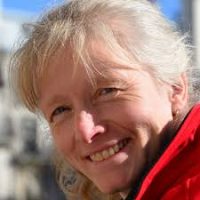
Anne Loison
More info
Laboratoire d'Ecologie Alpine, Université Savoie Mont Blanc, France
anne.loison@univ-smb.fr
Profile
Anne Loison is a senior researcher at the CNRS in France in the Alpine Ecology Lab of Savoie Mont Blanc University. She has worked with large herbivore ecology for the last 30 years, focusing on population dynamics, behavior, plant-herbivore relationship, predator-prey and human-wildlife interactions. She’s leading projects on mountain mammals, especially chamois, in populations with long-term studies based on the capture and marking of individuals. Her interest is to better understand the ecology and ecological role of mountain mammals in a rapidly changing world, where facing increasing human activities, predator and geat become a challenge for mountain ungulate populations
Plenary title
Chamois under increasing pressures of heat, crowd, and predation
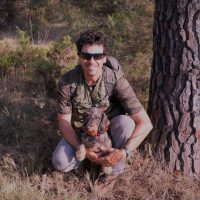
Emmanuel Serrano
More info
Wildlife Ecology & Health Group (WE&H) & Servei d´Ecopatologia de Fauna Salvatge (SEFaS), Departament de Medicina i Cirurgia Animals, Universitat Autònoma de Barcelona, Bellaterra, Spain.
emmanuel.serrano@uab.cat
Profile
Emmanuel Serrano is an associate professor at the Veterinary School of the Universitat Autònoma de Barcelona (UAB), Spain and leads the Wildlife Ecology & Health (WE&H) group. He coordinates the Ungulados Specialist Group of the Sociedad Española de Estudio y Conservación de los Mamíferos (SECEM, secem.es) and represents Europe in the Parasite and Pathogen Ecology and Evolution group of the British Ecological Society. As a wildlife ecologist, his research integrates functional ecology and epidemiology to explore multidisciplinary questions in disease ecology and wildlife management. His primary focus lies in understanding how pathogens and nutritional stress affect the dynamics of wildlife populations, with a particular emphasis on the role of ungulates as ecosystem engineers. He is especially interested in how these species respond to disease pressure, resource limitation, and hunting.
Plenary title
Shrubs, pathogens, hunting, and competitors: Testing the resilience of chamois populations
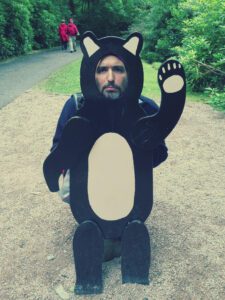
Philippe Fernandez
More info
Aix Marseille Université, Laboratoire méditerranéen de préhistoire Europe Afrique (LAMPEA), CNRS
philippe.fernandez@univ-amu.fr
Profile
Philippe Fernandez is a Senior Researcher at the Laboratoire Méditerranéen de Préhistoire Europe-Afrique (LAMPEA, CNRS, UMR 7269). His research primarily focuses on the paleontology, paleoecology, and evolution of European and North African mammalian fauna. He is also deeply involved in biochronology and the reconstruction of paleoenvironmental frameworks throughout the Pleistocene. Additionally, he studies population dynamics to better understand mammalian mortality in various paleobiological contexts, such as anthropic sites, natural fossil deposits, and carnivore dens. He was the head of the EcoQuat program (2016-2023) at LAMPEA, which focused on examining Quaternary ecosystems, resources, and the human impact on fossil cohorts during the Pleistocene. P. Fernandez has initiated several international research projects, exploring the interactions between humans and large mammals at Morocco’s rich prehistoric sites and their environmental and ecological dynamics.
Plenary title
Tracing Rupicapra: sparse fossils, elusive lineage.
Provisional program
Day 1
- Arrival at Konitsa
- 19.30-20.30 (Registration)
Day 2
- 8.30-9.30 Registration
- 10:00 Plenary lecture
- 11:00-13:30 Morning session (with coffee break)
- 13:30-15:00 Lunch break
- 15:00-18.00 Afternoon session (with coffee break)
- 20:00 Gala Dinner
Day 3
- 9:00 Plenary lecture
- 10:00-12:30 Morning session (with coffee break)
- 12:30-13:30 Plenary lecture
- 13:30-15:00 Lunch break
- 15:00-18.00 Afternoon session (with coffee break)
- 18:00-19.00 Overview and closing event
Day 4
Symposium excursion on Timfi Mt and Aoos Gorge. 7:00-17:00
Day 5
Departure
Instructions for authors
All submissions must be in English. Presenting authors can submit up to two abstracts for oral presentations or posters. Authors can be listed as co-authors on multiple submissions. Accepted abstracts will be included in the Symposium Book of Abstracts.
Abstracts must be submitted through the Symposium Google Form Registration. You will receive a confirmation email upon successful submission.
Download here the instructions for authors.
Registration and fees
Register and upload your abstract here
Registration fee:
Early bird registration (up to 15 July): 200 euros (100 euros for students)
Late registration (after 15 July): 250 euros (150 euros for students)
Payment information: Please proceed with payment through a bank transfer to the National Bank of Greece. Food costs for breakfast (12€) and lunch (20€) should be included if you opted for them.
Bank Account (National Bank of Greece): SWIFT code (BIC) ETHNGRAA (Account holder: ΠΙΝΔΟΣ ΠΕΡΙΒΑΛΛΟΝΤΙΚΗ)
IBAN:GR3801103590000035901741815
In the bank system, note “PAYMENT_RUPSYMPOSIUM_ SURNAME_NAME”
Once the process is completed, please send the receipt by email with the subject ‘PAYMENT_RUPSYMPOSIUM_SURNAME_NAME’. In your e-mail notify us of the amount paid for food. Students should upload a document certifying their student status (undergraduate, post-graduate, PhD students).
Funding and support

Under the endorsement of the IUCN SSC Caprinae Specialist Group

The municipality of Konitsa kindly supports the event by offering the venue and accommodation in its students’ hostel

Sponsors
Useful info
Travel to Konitsa
You should first reach Ioannina city. There is no train connection in Epirus region. Three bus itineraries per day connect Ioannina to Konitsa (approximately 60 minutes). See Ioannina-Konitsa and Konitsa-Ioannina. We most probably allow a bus for the departure date. Let’s see now how to reach Ioannina.
- You can take a flight to Ioannina (King Pyrros Airport), which is connected to international airports via Athens. This is the most direct option, but it is usually expensive.
- You can take a flight to Athens Airport (El. Venizelos) and then reach Ioannina by bus (416 km, approximately 4.5 hours).
- You can take a flight to Thessaloniki airport “Makedonia” (SKG) and then take a bus to Ioannina (261 km, ~3h)
- You can take a flight to Preveza International Airport (Aktion village), which offers relatively inexpensive international charter flights during the summer. You should then book a bus for your transfer to Ioannina (113 km).
- You can take a flight to Corfu island, towards the Corfu International airport “Ioannins Kapodistrias”, equally offering cheaper charter summer flights, but it involves traveling by boat (~1.30 h) and then by bus to Ioannina (Igoumenitsa Port-Ioannina: 78km)
Ioannina Airport “King Pyrros”: https://ioanninaairport.eu/
Athens Airport “Venizelos: (ATH): https://www.athens-airport.info/
Thessaloniki Airport “Makedonia” (SKG): https://www.skg-airport.gr/en
Preveza International Airport (Aktion): https://www.pvk-airport.gr/en/
Corfu Airport (CFU): https://www.cfu-airport.gr/en
Athens Bus station (http://ktelattikis.gr/en/)
Thessaloniki Bus station (https://ktelthes.gr/en/)
Ioannina Bus station https://ktelioannina.gr/en/
Olympic Airways (www.OlympicAir.com)
Aegean Airlines (www.aegeanair.com)
Taxi Konitsa: here
Taxiplon Ioannina: here
Car rental Ioannina: here
Accomodation
A number of 40 beds will be available to accommodate our students (undergraduate, post-graduate, and PhD students) and early career researchers (less than 30 years old) in the Students’ Hostel of the Municipality of Konitsa. Accommodation is offered in rooms with 2-4 beds with a private bathroom.
Many friendly hotels are available in Konitsa for participants, typically ranging from 50€ to 100€ per person per night, offering whole houses to share with colleagues or accompanying guests. You are free to book according to your needs. Check here for options. We will upload recommended hotels with special prices for our guests later.
Food
The organizing committee has made special arrangements for students and early-career researchers to include breakfast and lunch, as well as a limited number of other attendees (lunch). Around the central square of Konitsa, you’ll find a mix of local eateries—mostly casual, meat-focused, and full of traditional flavor. Check here.
Breakfast: For attendees staying at the Student Hostel, breakfast is available at a total cost of €12 per person for all four days of the symposium (€3 per person per day).
Lunch: For the two main conference days (September 25–26), a special lunch package is offered at €10 per person per day, accommodating up to 70 participants at the Student Hostel. Priority will be given to students and early-career researchers. The remaining spots will be allocated in chronological order of registration.
Lunch payments should be made at the time of symposium registration (via the online registration form). In case all seats are filled, you will be notified, and any excess payments will be fully refunded.
The menu includes:
Thursday 25 September
Main: Moussaka [classic traditional Greek dish with baked layers of eggplant, spiced meat and creamy sauce]
Vegetarian: Briam [beloved vegetarian dish of roasted mixed vegetables in olive oil and herbs]
Friday 26 September
Main: Trout [Grilled trout with herbs and lemon accompanied by potatoes]
Vegetarian: Gemista [famous Greek dish of oven-baked stuffed tomatoes and peppers with rice and herbs]
Dinner
Enjoy traditional dishes in the cozy taverns and bars of Konitsa- perfect for relaxing and connecting after the sessions.
Cash or card?
Visa and bank cards are used all over the country. However, it is advisable to have also cash with you, as in some local shops cash is the more popular payment method.
Holidays in Greece?
If you wish to combine the symposium with holidays, of course, Konitsa is a popular touristic destination at that time of the year, offering many options to prolong your holidays in the mountains.
You can visit Smolikas mountain (see Smolikas Refuge), or Timfi mountain (See Astraka Mountain Hut) and their famous Dragon Lakes above 2000 m. You can also visit Mastorochoria, the nearby Zagori, or the lovely Amarandos thermal center, but it’s recommended to rent a car to fully explore the area’s beauty.
If you would like holidays near the beach, explore the beautiful Greek western coasts of Parga, Preveza, Syvota (90-130km from Ioannina), but also the beautiful Ionian islands of Corfu, Paxoi, Lefkada.
Want to learn more about Northern Pindos National Park? Check here
See a panorama of landscapes in Vikos-Aoos Global UNESCO Geopark here
A video spot for Konitsa here
